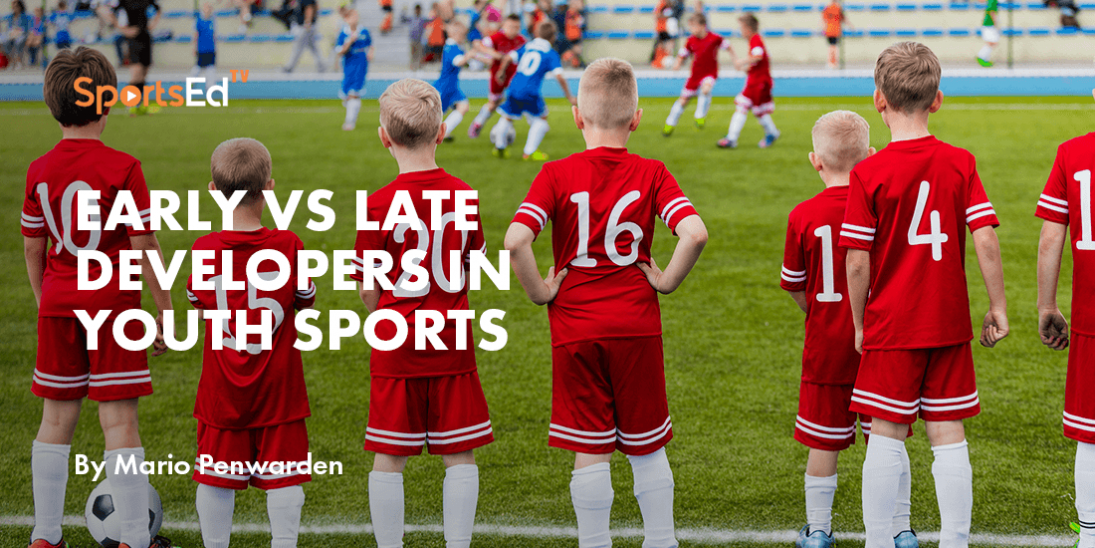Basketball, Physical Education, Soccer, Sports Parenting, Tennis
Welcome and thanks for visiting...

Early vs Late developers in Youth Sports

Millions of children across the globe partake in team sports daily. This can vary from sports played on fields, courts, and various other surfaces or spaces. These team activities usually occur in age groups, where the discrepancies between early developers and late bloomers come to the fore.
Understanding Early Developers and Late Bloomers
Children mature at different speeds, and you get what they call early and late developers. Most of the time, especially in the junior phase, the early bloomers are often children born in the first quarter of the year.
Birth Quarter Impact on Development: Why it Matters in Sports
There are other factors as well, but time of birth is one of the most predominant factors, and one can understand why. If you look at eight-year-olds as an example, a child born in January versus a child born in November or December almost has a year’s development advantage over their peer. This is massive, not only in terms of physical development but also in terms of skill exposure and skills development.
The Physical Disparities: A Look at Size and Skillset
After puberty kicks in, physical maturity becomes a bigger factor. In the same example for a 12-year-old boy, research shows that the early developer can be a foot taller and weigh between 30 and 40 pounds more than the late developer. It further shows that there can be up to a four-year difference in the physical maturity of children.
The Challenges Faced by Late Developers
This natural occurrence often becomes an issue for the late developer, especially in contact sports, where the late developer is a lot more prone to injuries due to the inability to compete physically. The early developer also has more strength, speed, and agility, placing them in a superior position. Unfortunately, coaches are often so performance-driven that they naturally choose the early developers and put more effort into these ‘stars.’ They don’t necessarily give the same amount of input and effort to a late developer with less potential and ability. The sad reality is that many late developers subsequently stop participating, whether due to injuries or low self-esteem, because they are just not being picked. When they mature, however, they have often lost interest or, because of a lack of exposure to skills training throughout the development years, they do not have the skill set to compete.
Why Not All Is Lost for Late Developers
It is not all lost for late developers, as research proves that they are more likely to succeed later in participation. A study of 12 years shows that of the athletes studied, 45% were stars in elementary but not junior high school, 30% were stars in junior high school but not in elementary school, and only 25% were stars in both elementary and junior high school. In other words, only one out of four-star athletes in elementary school maintained such a rating 3 to 4 years later in junior high school.
The Pros and Cons for Early Bloomers
Advantages for Early Bloomers
- Better self-esteem as they receive more positive feedback and reinforcement from parents and coaches
- Receives better coaching from earlier
- Has access to better facilities and exposure to more competitive experiences
- Earlier and more extensive socialization in sports;
Disadvantages for Early Bloomers
- They are not able to stay competitive when others catch up in terms of physical abilities because they were used to exploiting their physical ability without having to rely too much on skill at an early age
- Can get burned out quite early as parents tend to push them as they are perceived as superstars in the making
- Psychological issues as they try to live up to expectations from a young age and when they fail to perform or be selected later
- Self-image and mental health issues as they need to deal with losing and being unable to live up to self-imposed expectations. They often cannot handle the pressures of failure and quit the sport altogether.
Supporting Late Developers: Strategies and Tips
For late developers, the support systems around them become very important.
- Encourage your child and ensure that they continue playing even if you as a parent are frustrated because they are not achieving at a desired level
- Coaches must be aware of these physical advantages and disadvantages and have plans in place to prioritize those who are not seen as the stars of the team to ensure continued participation and acquire new skills
- Emphasize the journey and the process, not the results
- Do not focus on the outcome but instead praise small achievements and effort
- Be balanced in your approach and make sure your child understands that early success is not a measure of future success
- Select a sports program that understands child development
The Vital Role of Coaches and Parents
It is equally important that coaches and parents work along in striving to assist children in understanding the differences between them without unrealistically focusing on the result. It is equally important to support both early developers and late developers mentally and emotionally as both come with clear challenges, albeit at different stages in their lives.








